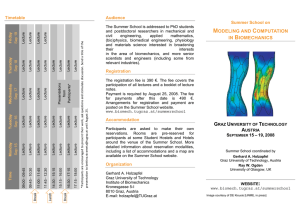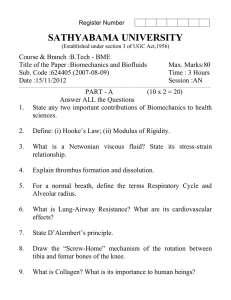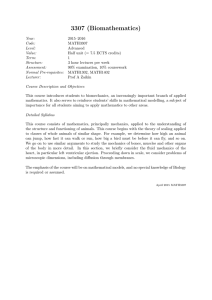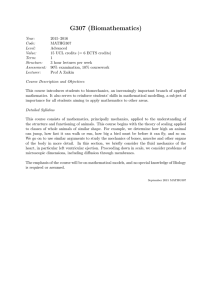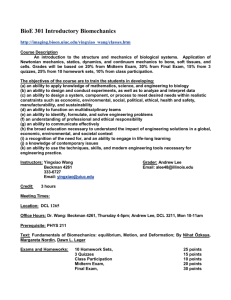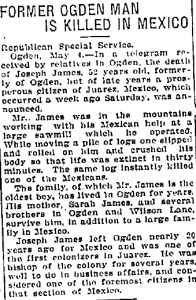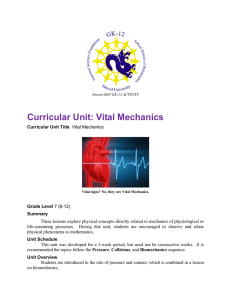B S T :
advertisement
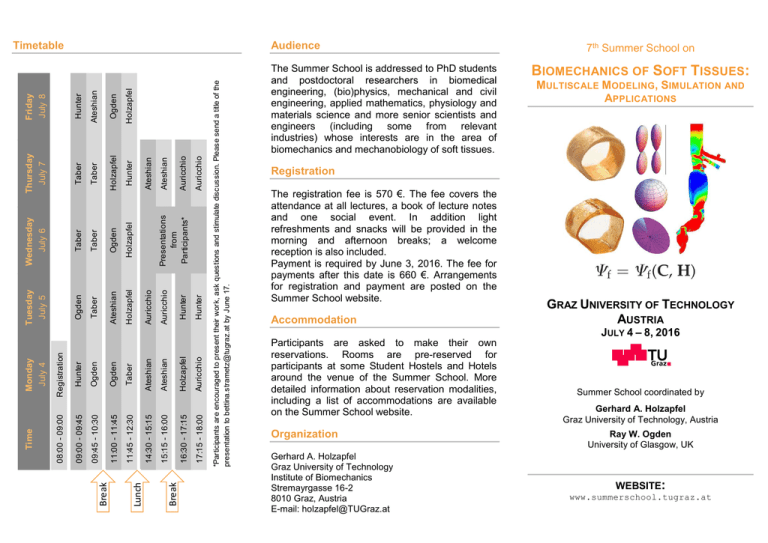
Hunter Auricchio 17:15 - 18:00 Hunter Holzapfel 16:30 - 17:15 *Participants are encouraged to present their work, ask questions and stimulate discussion. Please send a title of the presentation to bettina.strametz@tugraz.at by June 17. Auricchio Auricchio Ateshian Break 15:15 - 16:00 Ateshian Auricchio Presentations from Participants* Ateshian Auricchio Ateshian 14:30 - 15:15 Holzapfel Hunter Holzapfel Lunch 11:45 - 12:30 Taber Holzapfel Ogden Holzapfel Ogden 11:00 - 11:45 Ogden Ateshian Ateshian Taber Taber Break 09:45 - 10:30 Ogden Taber Hunter Taber Taber Ogden Hunter 09:00 - 09:45 08:00 - 09:00 Registration Wednesday July 6 Time Monday July 4 Tuesday July 5 Friday July 8 Audience Thursday July 7 Timetable The Summer School is addressed to PhD students and postdoctoral researchers in biomedical engineering, (bio)physics, mechanical and civil engineering, applied mathematics, physiology and materials science and more senior scientists and engineers (including some from relevant industries) whose interests are in the area of biomechanics and mechanobiology of soft tissues. 7th Summer School on BIOMECHANICS OF SOFT TISSUES: MULTISCALE MODELING, SIMULATION AND APPLICATIONS Registration The registration fee is 570 €. The fee covers the attendance at all lectures, a book of lecture notes and one social event. In addition light refreshments and snacks will be provided in the morning and afternoon breaks; a welcome reception is also included. Payment is required by June 3, 2016. The fee for payments after this date is 660 €. Arrangements for registration and payment are posted on the Summer School website. Accommodation GRAZ UNIVERSITY OF TECHNOLOGY AUSTRIA JULY 4 – 8, 2016 Participants are asked to make their own reservations. Rooms are pre-reserved for participants at some Student Hostels and Hotels around the venue of the Summer School. More detailed information about reservation modalities, including a list of accommodations are available on the Summer School website. Organization Gerhard A. Holzapfel Graz University of Technology Institute of Biomechanics Stremayrgasse 16-2 8010 Graz, Austria E-mail: holzapfel@TUGraz.at Summer School coordinated by Gerhard A. Holzapfel Graz University of Technology, Austria Ray W. Ogden University of Glasgow, UK WEBSITE: www.summerschool.tugraz.at Objectives Invited Lecturers This is the 7th Summer School on Biomechanics presenting a state-of-the-art overview of biomechanical and mechanobiological multiscale modeling of soft biological tissues with related computer simulations and their applications. The lectures will cover constitutive modeling of soft tissues such as arteries, including different aspects of structural modeling, then cartilage and the heart in comparison with experimental data. Also will be included the continuum theory of mixtures, coupled models with molecular signaling pathways, growth and remodeling, developmental biomechanics and discussion of the nonlinear finite element method with applications in biomedical engineering including implants. Gerard A. Ateshian Columbia University, New York, NY, USA The essential ingredients of continuum mechanics are provided since they are key for the modeling of soft biological tissues. Constitutive models of soft fibrous biological materials, with an emphasis on arterial walls considering collagen fiber orientation, dispersion and recruitment and the myocardium. Other topics included are: mixture theory of growth and remodeling and associated residual stresses; an introduction to CellML, OpenCOR, Physiome Model Repository; models of action potential propagation in neurons; calcium transport and myofilament mechanics in the heart; the mechanics of growth and morphogenesis; heart, brain, and eye development; mechanical feedback in the embryo; the elasticity of biopolymer filaments and the mechanics of cross-linked actin networks. The nonlinear finite element method is introduced and computational tools are developed that support device design and surgical operation planning. Particular attention is paid to multiphysics and multiscale modeling of arterial walls, the 3D heart, cartilage and to simulations of transcatheter aortic valve implantation, stents and aortic endografting. Gerhard A. Holzapfel Graz University of Technology, Austria Participants are requested to bring a laptop with the OpenCOR software installed, which runs on Windows, Mac and several flavours of Linux. To install and run OpenCOR see the tutorial of PJ Hunter that can be downloaded from the Summer School website. Introduction and application of mixture theory to growth and remodeling of biological tissues; governing equations for mass and momentum balance in the presence of reactions; residual stresses from growth; examples from cartilage tissue engineering Ferdinando Auricchio University of Pavia, Italy Nonlinear finite element method with a focus on biomechanics; development of computational tools for support device design and procedures such as surgical operation planning; simulation of transcatheter aortic valve implantation, stents and aortic endografting Introduction to soft tissue biomechanics; arterial walls in health and disease; multiscale modeling of arterial walls considering collagen fiber dispersion and recruitment; mechanics of the myocardium – recent modeling and simulation; mechanics of cross-linked actin network Peter Hunter The University of Auckland, New Zealand Introduction to CellML, OpenCOR, Physiome Model Repository; models of action potential propagation in neurons and heart with membrane ion channels; models of EC coupling, calcium transport, myofilament mechanics in the heart; models of signal transduction pathways; multiphysics, multiscale modeling in the 3D heart Ray W. Ogden University of Glasgow, UK Essential ingredients of continuum mechanics; nonlinear elasticity theory; constitutive modeling of soft fibrous materials; influence of fiber structure, including orientation dispersion, on elasticity of artery walls; residual stresses and their effect on the elastic response of arteries Preliminary Suggested Readings G.A. Ateshian, T. Ricken: Multigenerational interstitial growth of biological tissues. Biomech Model Mechanobiol, 9:689-702, 2010. G.A. Ateshian: Mixture theory for modeling biological tissues: Illustrations from articular cartilage. G.A. Holzapfel, R.W. Ogden (Eds.), Biomechanics: Trends in Modeling and Simulation. Springer, in press. 2016. F. Auricchio, M. Conti, S. Morganti, A. Reali. Simulation of transcatheter aortic valve implantation: a patient-specific finite element approach. Comput Methods Biomech Biomed Engin, 17:1347-1357, 2014. F. Auricchio, M. Conti, S. Marconi, A. Reali, J.L. Tolenaar, S. Trimarchi. Patient-specific aortic endografting simulation: from diagnosis to prediction. Comput Biol Med, 43: 386-394, 2013. G.A. Holzapfel, J.A. Niestrawska, R.W. Ogden, A.J. Reinisch, A.J. Schriefl: Modelling non-symmetric collagen fibre dispersion in arterial walls. J R Soc Interface, 12:20150188, 2015. G.A. Holzapfel, R.W. Ogden: Constitutive modelling of passive myocardium: a structurally based framework for material characterization. Phil Trans R Soc Lond A, 367:34453475, 2009. G.A. Holzapfel, R.W. Ogden: Constitutive modelling of arteries. Proc R Soc Lond A, 466:1551–1597, 2010. G.A. Holzapfel, R.W. Ogden (Eds.): Biomechanics: Trends in Modeling and Simulation. Springer, in press. 2016. P.J. Hunter: Tutorial on CellML, OpenCOR & the Physiome Model Repository. 2016. Y. Shi, J. Yao, J.M. Young, J.A. Fee, R. Perucchio, L.A. Taber: Bending and twisting the embryonic heart: a computational model for c-looping based on realistic geometry. Front Physiol, 5:297, 2014. Larry A. Taber Washington University, St. Louis, MO, USA L.A. Taber: Morphomechanics: transforming tubes into organs. Curr Opin Genet Dev, 27:7-13, 2014. Mechanics of growth and morphogenesis in living systems; heart, brain, and eye development; mechanical feedback in the embryo; specific topics in cardiovascular biomechanics are covered Download all papers from the website: www.summerschool.tugraz.at/objectives
